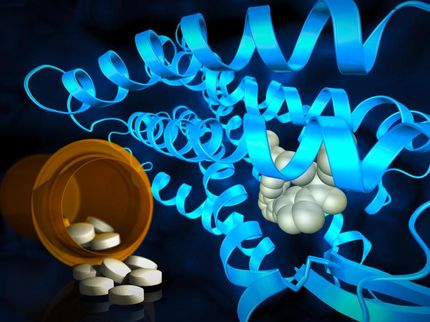Improved technique determines structure in membrane proteins
Understanding the form and function of certain proteins in the human body is becoming faster and easier, thanks to the work of researchers at the University of Illinois. By combining custom-built spectrometers, novel probe designs and faster pulse sequences, a team led by Illinois chemistry professor Chad Rienstra has developed unique capabilities for probing protein chemistry and structure through the use of solid-state nuclear magnetic resonance spectroscopy.
The researchers' recent results represent significant progress toward atomic-scale resolution of protein structure by solid-state NMR spectroscopy. The technique can be applied to a large range of membrane proteins and fibrils, which, because they are not water-soluble, are often not amenable to more conventional solution NMR spectroscopy or X-ray crystallography.
"In our experiments, we explore couplings between atoms in proteins," Rienstra said. "Our goal is to translate genomic information into high-resolution structural information, and thereby be able to better understand the function of the proteins."
Solid-state NMR spectroscopy relaxes the need for solubility of the sample. In solution NMR spectroscopy, molecules are allowed to tumble randomly in the magnetic field. In solid-state NMR spectroscopy, molecules are immobilized within a small cylinder called a rotor. The rotor is then spun at high speed in the magnetic field.
"With increased speed and sensitivity, we can obtain very high resolution spectra," Rienstra said. "And, because we can resolve thousands of signals at a time – one for each atom in the sample – we can determine the structure of the entire protein."
To improve sensitivity and accelerate data collection, Rienstra's group is developing smaller rotors that can be spun at rates exceeding 25,000 rotations per second. The faster rotation rate and smaller sample size allows the researchers to obtain more data in less time, and solve structure with just a few milligrams of protein.
Most read news
Topics
Organizations
These products might interest you

Microspectrometer by Hamamatsu Photonics
Ultra-compact microspectrometer for versatile applications
Precise Raman, UV/VIS and NIR measurements in portable devices
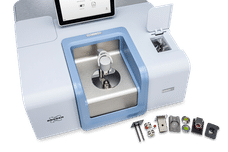
INVENIO by Bruker
FT-IR spectrometer of the future: INVENIO
Freely upgradeable and configurable FT-IR spectrometer

contrAA 800 by Analytik Jena
contrAA 800 Series – Atomic Absorption. Redefined
The best of classical atomic absorption and ICP-OES spectrometry are combined in the contrAA 800

SPECORD PLUS by Analytik Jena
SPECORD PLUS Series - Maximum precision in UV/Vis
The modern classic guarantees the highest quality

ZEEnit by Analytik Jena
Zeeman Technology for Maximum Sensitivity – Matching any Analytical Problem
Transverse-heated graphite furnace for optimum atomization conditions and high sample throughput

PlasmaQuant MS Elite by Analytik Jena
LC-ICP-MS Is the Key to the World of Elemental Species
Highest Sensitivity and Lowest Detection Limits with PlasmaQuant MS Series and PQ LC
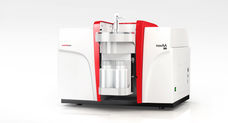
novAA® 800 by Analytik Jena
The Analyzer 4 You - novAA 800-Series
The reliable all-rounder, making routine analysis efficient and cost-effective

Biacore catalogue by Cytiva
Get started with Surface Plasmon Resonance interaction analysis - which system is right for you?
Discover simpler and faster Surface Plasmon Resonance (SPR) with Biacore systems
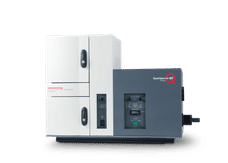
Quantaurus-QY by Hamamatsu Photonics
High-speed UV/NIR photoluminescence spectrometer
Precise quantum yield measurements in milliseconds without reference standards
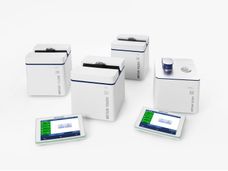
FastTrack™ by Mettler-Toledo
FastTrack UV/VIS Spectroscopy - Speed Up Your Measurements
Fast, reliable & efficient measurements with traceable accuracy in a small footprint

Get the analytics and lab tech industry in your inbox
By submitting this form you agree that LUMITOS AG will send you the newsletter(s) selected above by email. Your data will not be passed on to third parties. Your data will be stored and processed in accordance with our data protection regulations. LUMITOS may contact you by email for the purpose of advertising or market and opinion surveys. You can revoke your consent at any time without giving reasons to LUMITOS AG, Ernst-Augustin-Str. 2, 12489 Berlin, Germany or by e-mail at revoke@lumitos.com with effect for the future. In addition, each email contains a link to unsubscribe from the corresponding newsletter.
More news from our other portals
See the theme worlds for related content
Topic World Spectroscopy
Investigation with spectroscopy gives us unique insights into the composition and structure of materials. From UV-Vis spectroscopy to infrared and Raman spectroscopy to fluorescence and atomic absorption spectroscopy, spectroscopy offers us a wide range of analytical techniques to precisely characterize substances. Immerse yourself in the fascinating world of spectroscopy!

Topic World Spectroscopy
Investigation with spectroscopy gives us unique insights into the composition and structure of materials. From UV-Vis spectroscopy to infrared and Raman spectroscopy to fluorescence and atomic absorption spectroscopy, spectroscopy offers us a wide range of analytical techniques to precisely characterize substances. Immerse yourself in the fascinating world of spectroscopy!
